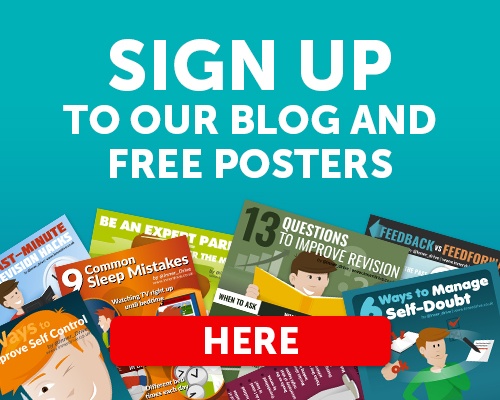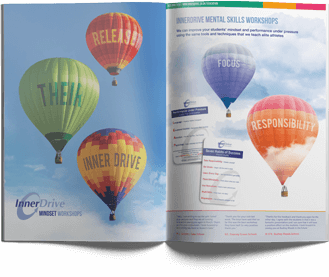Wouldn’t it be good if a recently released study was able to capture exactly what students focus on when they look at your PowerPoint presentations? That way, we would be able to see what they pay attention to and get an indication of their levels of cognitive overload.
Good news: This study exists.
Not all PowerPoint presentations are created equal, and their effectiveness can significantly vary depending on how they're designed and used. Recent research suggests that some slide designs can be so overwhelming for students that they barely absorb any information from them at all. So, read on to learn more about:
- The intersection between Cognitive Load Theory and PowerPoint slides
- What the study found
- 5 tips to manage your students’ cognitive load
A quick recap on Cognitive Load Theory
Before we dive into the specifics of PowerPoint presentations, let's quickly recap what Cognitive Load Theory is and its relevance to education. Developed in the late 1980s by educational psychologist, John Sweller, Cognitive Load Theory explores the idea that our working memory has a limited capacity for processing new information.
In the context of education, understanding and managing cognitive load is crucial. If a lesson or, in this blog’s case, a presentation overloads a student's cognitive capacity, it can hinder their learning and lead to confusion and frustration. On the other hand, optimised cognitive load can significantly enhance comprehension and retention.
What does the research say?
In an intriguing piece of recent research, 30 students were equipped with eye-trackers and presented with a series of PowerPoint slides, each designed differently. The resulting heat maps (below) show us what students looked at and for how long:
- Red areas are where students paid most attention
- Yellow areas are where students paid some attention
- Green areas are where students paid little attention
- Areas with no colour are where students paid no attention
The results answer some of the most pressing questions around PowerPoint slides design in the classroom. So, let’s look at them and discuss some handy tips to help you to manage your students’ cognitive load and maximise their learning outcomes…
How many words should be on a PowerPoint slide at one time?
When confronted with a slide displaying a solitary bullet point, students in the study engaged comprehensively, typically reading every word and taking on the information. However, as the quantity of information increased, their engagement waned. Slides crammed with multiple long-form bullet points all at once saw students reading only a fraction of the content.

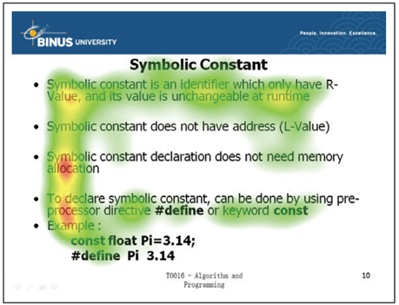

Tip #1: Less is more
In line with Cognitive Load Theory, these findings suggest that the less words on a PowerPoint slide, the better (though there probably is a limit to this!). Providing limited information to your students at a time allows them to pay attention to the entire slide’s contents and absorb the information you are presenting to them without overworking their cognitive load.
In the case of using examples, the researchers suggest that positioning them before information on a slide may be more effective. By using this approach, your students first learn the examples and are then able to generalise their learning without skipping over key information.
What about using diagrams on PowerPoint slides?
The researchers found that when slides were overloaded with both text and complex diagrams, the students' engagement dropped significantly, to the point where almost nothing was absorbed from the diagram. If a diagram looks particularly complex, students tend to fix their attention on the upper half portion of the slide with text.
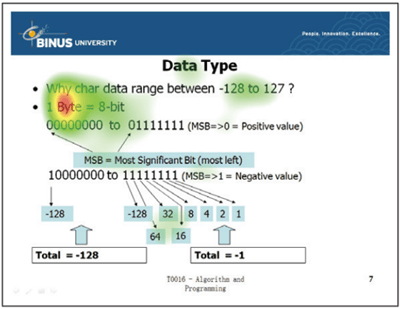
Tip #2: Keep text with diagrams to a minimum
Again, in line with Cognitive Load Theory, it's beneficial to keep text on slides to a minimum, especially when including diagrams. This approach ensures that your students' attention is drawn directly to the diagram itself, without competing textual elements diverting their focus. Simplifying slide content in this way can enhance your students' ability to engage with and comprehend complex visual information effectively.
What if I need to include a lot of information?
This study found that presenting a lot of information in short bullet points or key words made students more likely to focus on and absorb the critical information. The researchers also found that 50% of the students scanned data entries in a table left to right, from top to bottom – meaning that by the last entry, many students’ attention has been lost.
Conversely, results show that if information is presented in “blocked” areas, students tend to pay attention to each block, reading the contents of each block line by line.
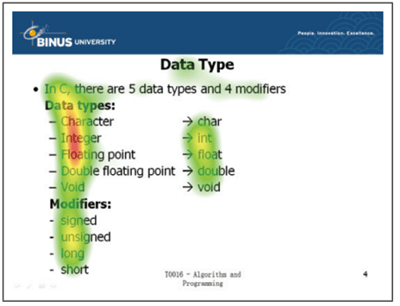

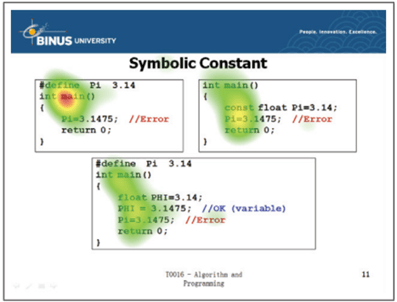
Tip #3: Focus on how you present information
If you need to present a lot of information in few slides, this research suggests that the best way to make sure your students absorb the content is to focus on how you present it. Breaking down large amounts of information into key words or smaller bullet points can help tackle this problem.
This research also shows that breaking down complex information into smaller, more manageable blocks significantly aids in capturing your students' attention. This method aligns with Cognitive Load Theory, which suggests that students' ability to process and retain information improves when it is presented in digestible segments. By strategically organising content in this manner, you can enhance student engagement and facilitate deeper understanding among your students.
Tip #4: Draw attention to key information
In light of findings that half of students tend to scan data in a table from left to right and top to bottom, losing focus by the final entries, it's crucial to adopt strategies that ensure all of your students grasp the essential information. If a slide is heavy on information, such as a detailed chart, a suggested practical approach is to verbally guide your students through the content.
By highlighting key points and directing attention vocally, you can help ensure that even those students who might lose focus are still able to capture the most critical aspects of the presentation. This method enhances the effectiveness of data-heavy slides by making sure that all students' attention is drawn to the pivotal information.
Tip #5: Use handouts
As research indicates that students often find it challenging to maintain their attention when confronted with slides overloaded with information, a strategic approach to take could be to provide handouts alongside your PowerPoint presentations.
These handouts can help emphasise key points and consolidate crucial information, offering a tangible reference your students can engage with both during and after the lesson – thereby enhancing their learning experience.
Our top 5 tips for PowerPoint presentations summarised
- Less is more
To optimise student engagement and comprehension, use minimal text per slide and present examples before explanations.
- Keep text with diagrams to a minimum
Minimising text on slides containing diagrams focuses students' attention on the visuals, facilitating better engagement and understanding of complex information.
- Focus on how you present information
Focus on delivery by breaking down content into key words, bullet points or simplified blocks to ensure student engagement and comprehension when presenting extensive information.
- Draw attention to key information
Vocally guide your students through the content of data-heavy slides to ensure focus on essential information and accommodate varied scanning habits.
- Use handouts
Providing handouts alongside PowerPoint presentations can significantly enhance your students' learning by emphasising key points and consolidating information, offering a more engaging and effective reference tool.
Final thoughts
The strategic use of PowerPoint presentations in educational settings is an invaluable tool for enhancing the learning experience. By grounding your approach in the principles of Cognitive Load Theory, you can create presentations that are not only visually engaging but also structured in a way that optimises the cognitive processing capabilities of your students, enhancing their ability to absorb and retain information.
To help your staff to understand and apply the latest and most important Cognitive Science research such as this, join our Teacher CPD Academy today!


